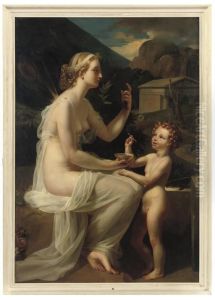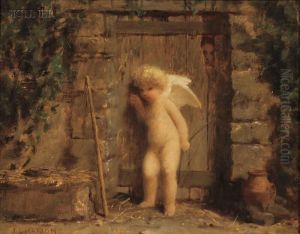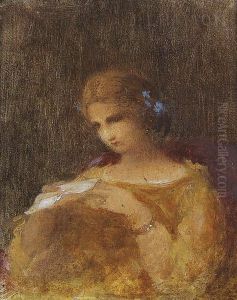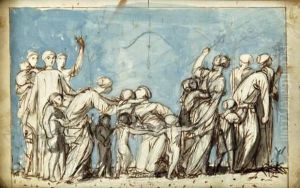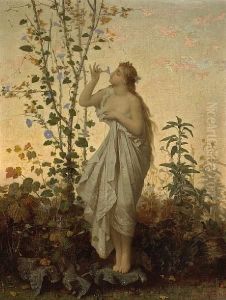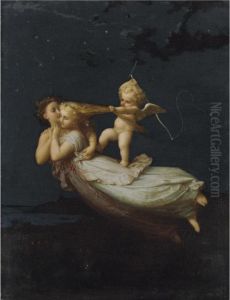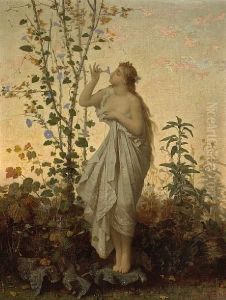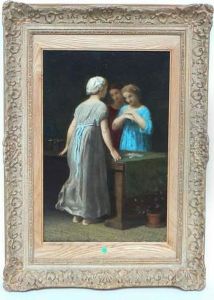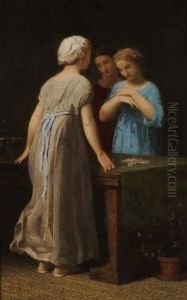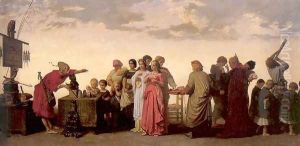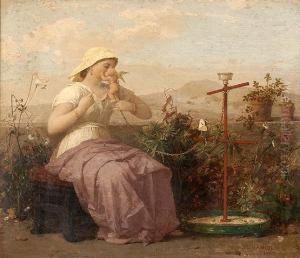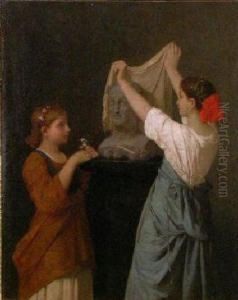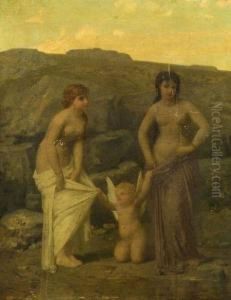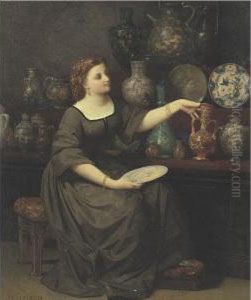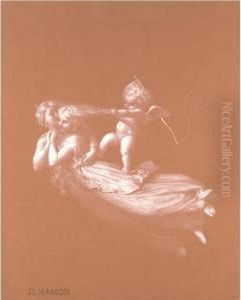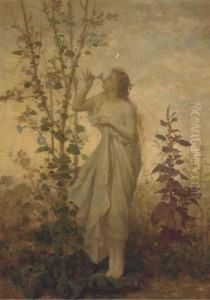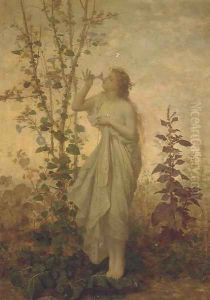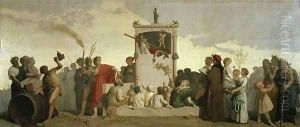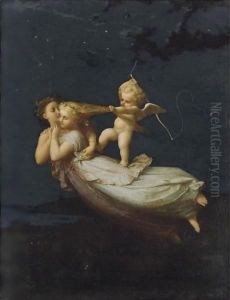Jean-Louis Hamon Paintings
Jean-Louis Hamon was a French painter born on May 5, 1821, in Plouha, in the Côtes-d'Armor department of Brittany. He was a prominent figure among the second generation of Neoclassical artists and is known for his allegorical works and scenes with a strong focus on idealism and purity.
Hamon studied under Paul Delaroche, a leading French painter of the time, and later under Jean-Auguste-Dominique Ingres, who was one of the foremost Neoclassical painters. Hamon's training under these influential artists helped shape his classical style, characterized by clear outlines, smooth finish, and a serene quality. In 1848, he won the coveted Prix de Rome for his painting 'Meleager' and subsequently spent time at the French Academy in Rome, Villa Medici, where he was exposed to the art of the Italian Renaissance and the antiquities of Rome.
During his time in Rome, Hamon developed a style that was also influenced by the early Renaissance painters. His work was marked by an attention to detail, an ethereal quality, and often included themes of love and beauty, as seen in his works 'The Plague of Florence' (1868) and 'The Sleep of Venus' (1863). Hamon also created a number of decorative panels and was involved with several interior design projects during his career.
Despite his success, Jean-Louis Hamon's life was not without its struggles. He faced financial difficulties and his health began to decline in the later years of his life. Hamon died on May 29, 1874, in Saint-Raphaël, Var, at the age of 53. While he may not be as widely recognized today as some of his contemporaries, his work remains an important part of the Neoclassical period and reflects the 19th century French art movement known as the 'Purismo', which advocated for purity and clarity of form and subject.
